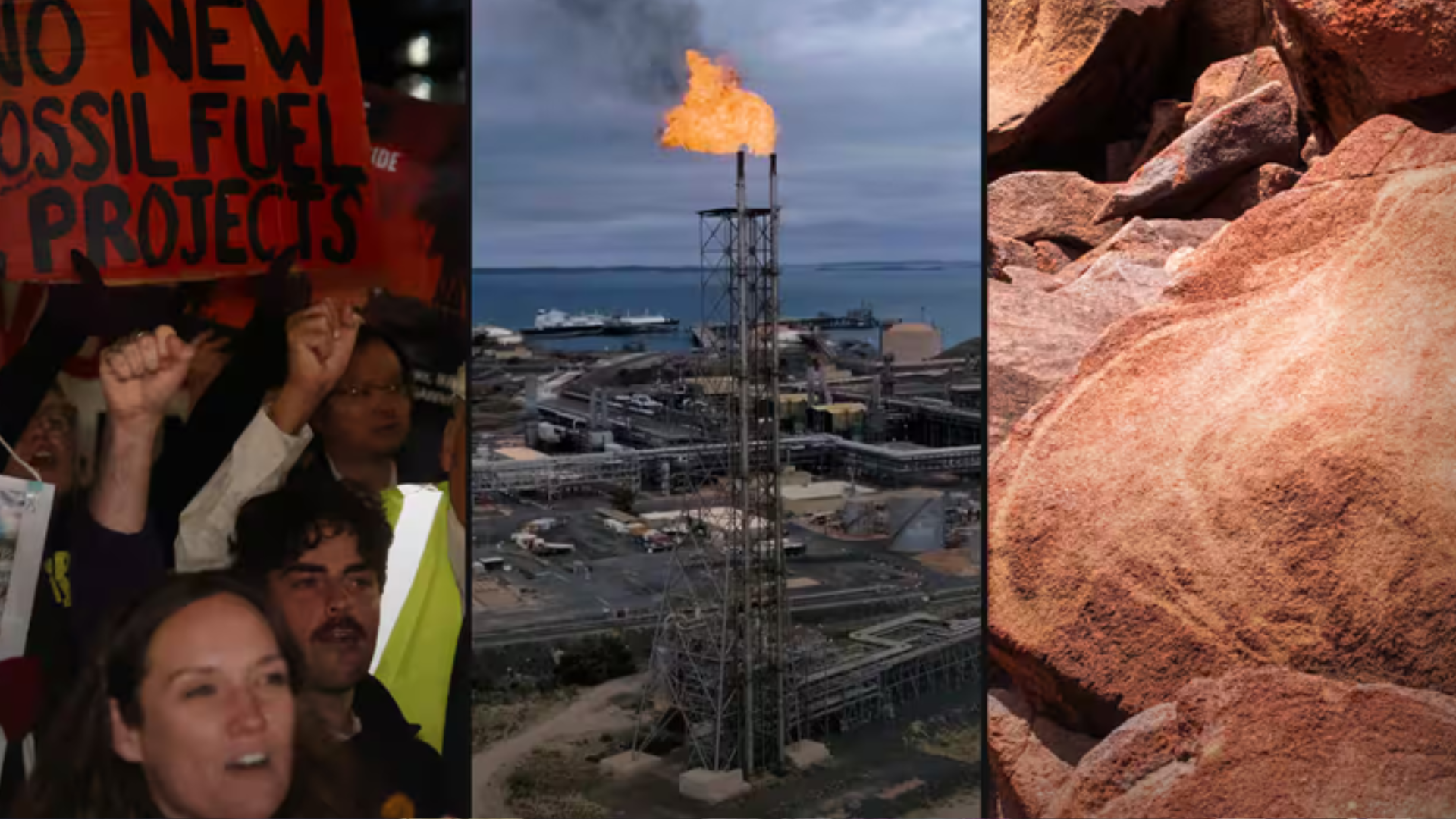Murujuga’s Ancient Art Faces Modern Threat
Murujuga rock art threatened as Australia’s federal government approves North West Shelf LNG project extension until 2070.
Cultural Legacy at Risk
The Murujuga Cultural Landscape contains over 1 million petroglyphs, including the world’s oldest depictions of human faces, dating back up to 50,000 years.The rock art, which captures thousands of years of environmental history and folklore, is an ongoing cultural heritage of the Aboriginal Traditional Owners.
This hallowed area is nonetheless surrounded by intense industrial development, despite its cultural and spiritual value.
UNESCO Listing in Limbo
The recent approval has triggered backlash from conservationists and archaeologists. The International Council on Monuments and Sites (ICOMOS) has recommended UNESCO defer the site’s World Heritage nomination due to ongoing industrial threats. It urged the removal of all acidic emissions and a halt to any further industrial development near Murujuga.
Scientific Evidence of Ongoing Damage
Recent reports, including the Murujuga Rock Art Monitoring Program Year 2, confirm that emissions from the North West Shelf project are degrading the rock surface.Tests show that rocks like granophyre have higher porosity, which is directly related to emissions of nitrogen dioxide (NO₂) and sulfur dioxide (SO₂).
According to a PhD study by researcher Jolam Neumann, the concentration of manganese, which is required to preserve the protective rock varnish, dropped by more than 50% between 1994 and 2021. The damage is obvious and increasing.
The Relationship Between Cyanobacteria and Varnish Loss
The foundation of rock art is rock varnish, a thin protective coating created by cyanobacteria over thousands of years. These microorganisms are essential for maintaining the art and only flourish in conditions with a pH of neutral. The environment is becoming too acidic for these creatures due to industrial pollution, which causes art erosion and varnish disintegration.
Government Downplays Current Pollution
Although the government attributes much of the damage to an outdated 1980s power plant, current data shows modern emissions far exceed past levels.Historical outputs are far outweighed by the 13,000+ tonnes of NO₂ and 6,500 tonnes of SO₂ produced annually by the sector now.
Solutions Exist — But Are Ignored
Experts say that damage will continue unless industrial emissions are reduced to zero. Viable solutions include:
- Selective catalytic reduction (SCR) to neutralize NO₂
- Transitioning to electric systems for heat production
Environmental groups are urging the Australian government to include such requirements as conditions of approval for any further LNG development.
Conclusion: A 50,000-Year-Old Warning
Murujuga’s petroglyphs are irreplaceable artifacts of human history. Their survival now hinges on political will and technological responsibility. Without immediate action, one of the world’s oldest cultural sites may be lost to industrial progress.
Source: The Guardian





